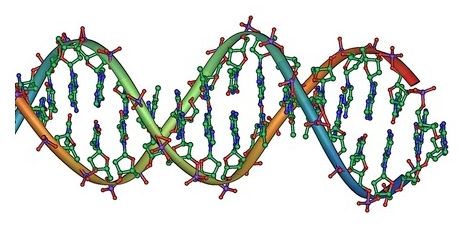The technique could be particularly useful for combating blood-related cancers and other disorders, as well as its anti-aging potential.
Get the latest international news and world events from around the world.

Scientists Have Made a Huge Breakthrough In Cryogenics
Cryopreservation is the process of freezing organs and tissues at very low temperatures in order to preserve them. While it sounds simple in theory, only a handful of cells and tissues have survived this method. This is because while science has successfully developed ways to cool organs to the very low temperatures required for preservation, thawing them out has proven far more difficult. As the specimen thaws, it forms ice crystals, which can damage the tissue and render organs unusable.
Right now, the process is only a viable option for small samples, such as sperm or embryos. Previous efforts using slow warming techniques have proven to be effective on samples of that size, but haven’t worked for larger tissue samples, like whole human organs. The inability to safely thaw the tissue has also precluded the theoretical concept of cryogenically preserving entire human bodies, with the intention of reanimating them later. The concept has roots in cryogenic technology, but is actually referred to as “cryonics”, and the scientific community generally considers it to be more science fiction than science fact — at least for the time being.
A recent study has made a significant breakthrough which may well begin closing that gap even more. Using a new technique, scientists were able to cryopreserve human and pig samples, then successfully rewarm it without causing any damage to the tissue.

Sex Robot Brothel Opens Up in Barcelona
Anyone who watched HBO’s Westworld and came away from it with the desire to have sex with a robot is now in luck. A brothel full of sex dolls has opened up in Barcelona, Spain.
Lumi Dolls offers four models that anyone can reserve for a set amount of time. Thanks to new technology, Lumi Dolls brags that its dolls are among the most realistic on the market — and they cost around €120 per hour, which is about $127. The brothel offers other services as well, including overnight stays and options for couples, but those price quotes require a consultation. Reservations are taken online.
Each of the models come complete with a sort of character page on the Lumi Dolls website, which houses a description of the doll’s anatomy, creative inspiration, and what to look forward to in the doll’s room.
Scientists get the green light to resurrect the dead with stem cells
Bioquark, a biotech company based in the United States, has been given the go-ahead to begin research on 20 brain-dead patients, in an attempt to stimulate and regrow neurons and, literally, bring the patients back from the dead.
The technique is new and untested so the study will likely be controversial. By implanting stem cells in the patient’s brain, in addition to treating the spinal cord with infusions of chemicals and nerve stimulation techniques (both of which have been shown to bring people out of comas), they hope to reboot the brain and jump-start neural activity.
The result could be people coming back to life.
Biology is software that builds its own hardware
Software we can upgrade. Genetics and biotech have made “LIFE” our new canvas.

Scientists reveal new super-fast form of computer that ‘grows as it computes’
Researchers from The University of Manchester have shown it is possible to build a new super-fast form of computer that “grows as it computes”.
Professor Ross D King and his team have demonstrated for the first time the feasibility of engineering a nondeterministic universal Turing machine (NUTM), and their research is to be published in the prestigious Journal of the Royal Society Interface.
The theoretical properties of such a computing machine, including its exponential boost in speed over electronic and quantum computers, have been well understood for many years – but the Manchester breakthrough demonstrates that it is actually possible to physically create a NUTM using DNA molecules.
Windowless Airplane
Windowless planes could be a game changer in aviation! ![]() 🙌
🙌 ![]() 🙌.
🙌.
Boston Dynamics Officially Unveils Its Wheel-Leg Robot: “Best of Both Worlds”
Boston Dynamics’s Handle is a humanoid robot on wheels, and it’s amazing.
Western Digital Is Starting To Produce World’s First 64-Layer 3D NAND Flash Memory Chip
Western Digital begins production of the first 64-layers 3D NAND memory chip in the world. (Photo : SanDisk / YouTube)
Western Digital has announced on Monday, Feb. 6, that it has started its production of the densest 3D NAND flash memory chips in the industry. The new Western Digital 3D NAND chips enable three bits of data to be stored in each cell and stack 64 layers atop another.
According to Computerworld, the 3D NAND flash chips are based on 3D technology or vertical stacking. This technology is called Bit Cost Scaling (BiCS) by Western Digital (WD) and its partner Toshiba. The pilot production of the first 64-layer 3D NAND flash 512 GB memory chip has been already launched by WD.
